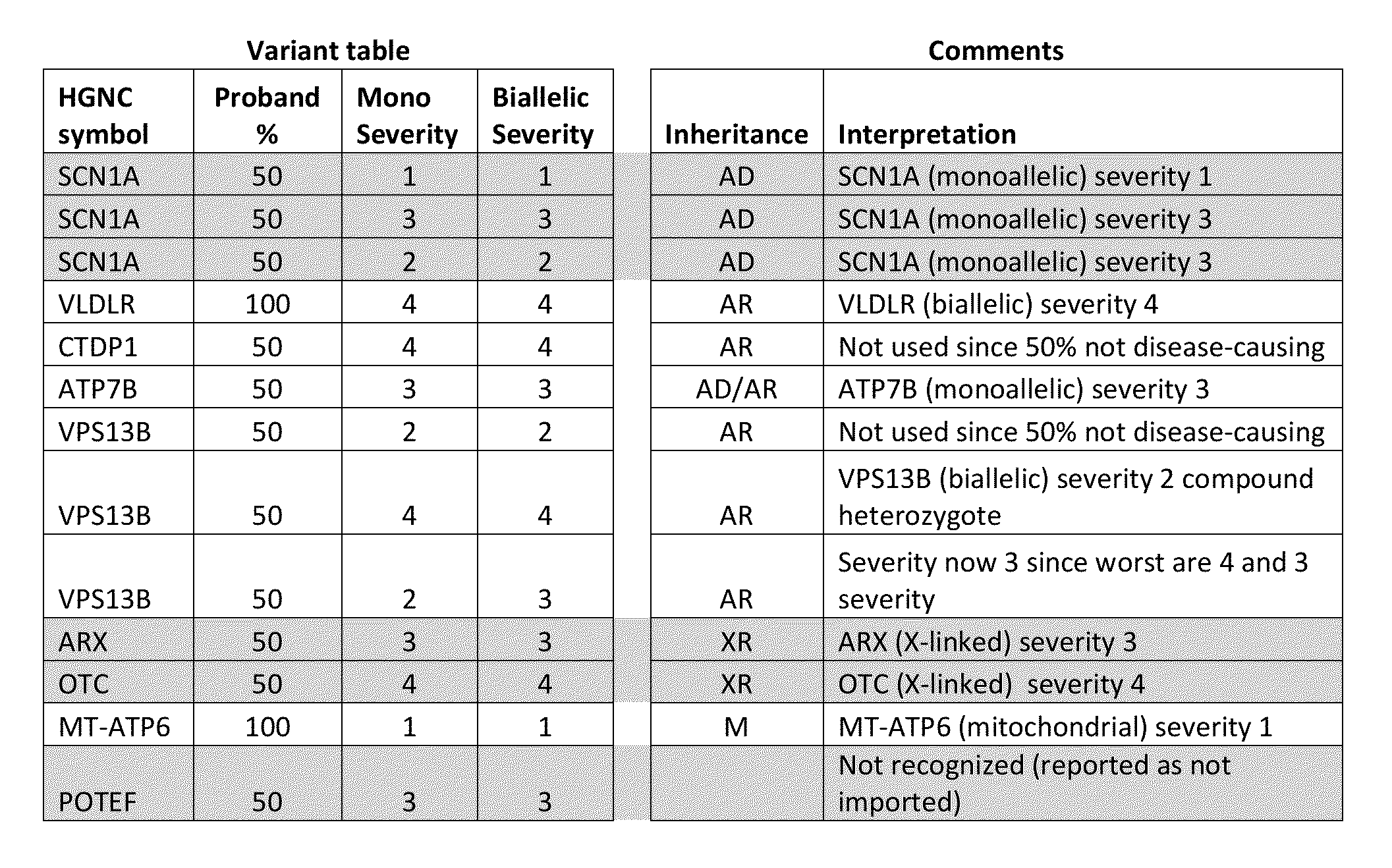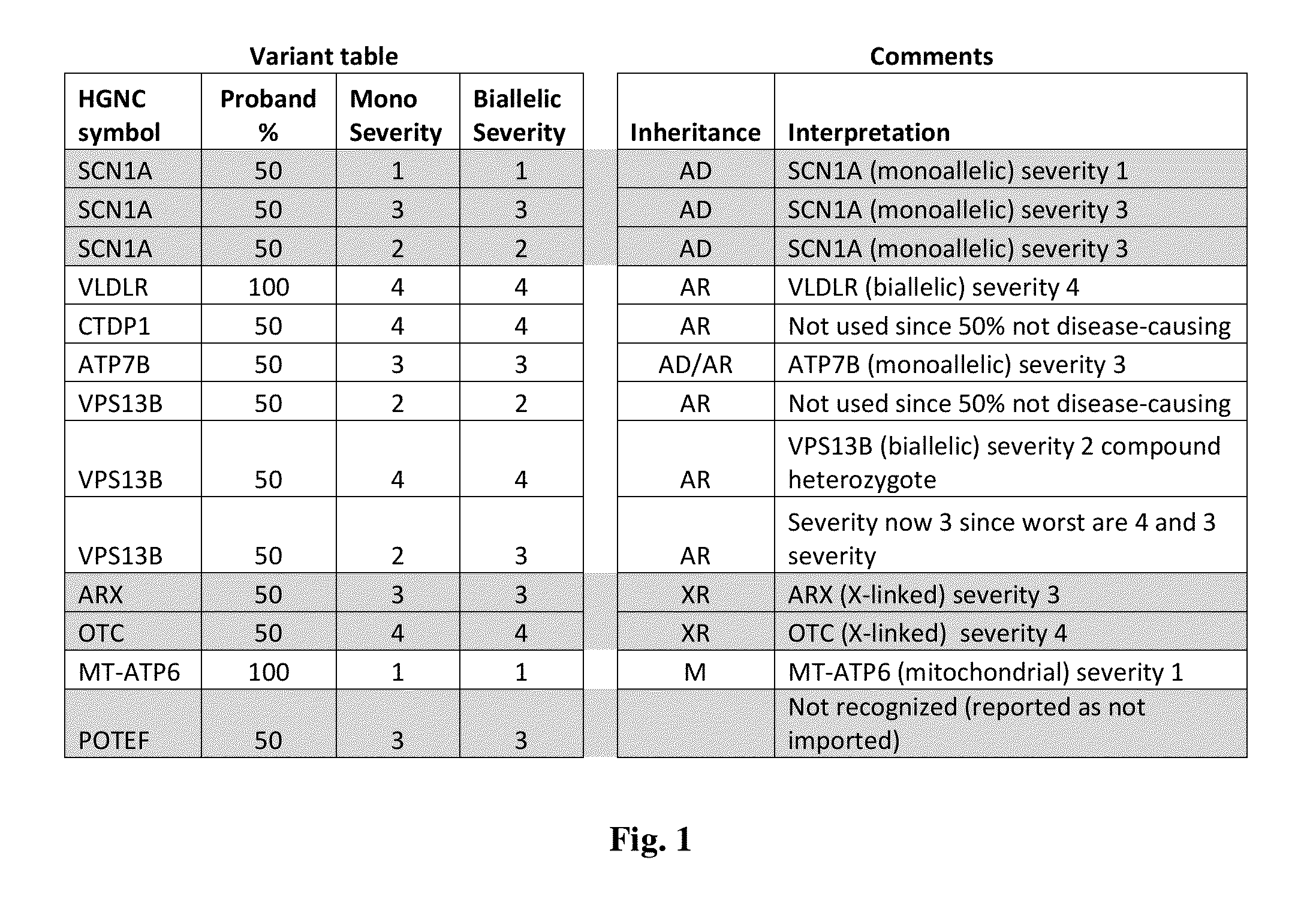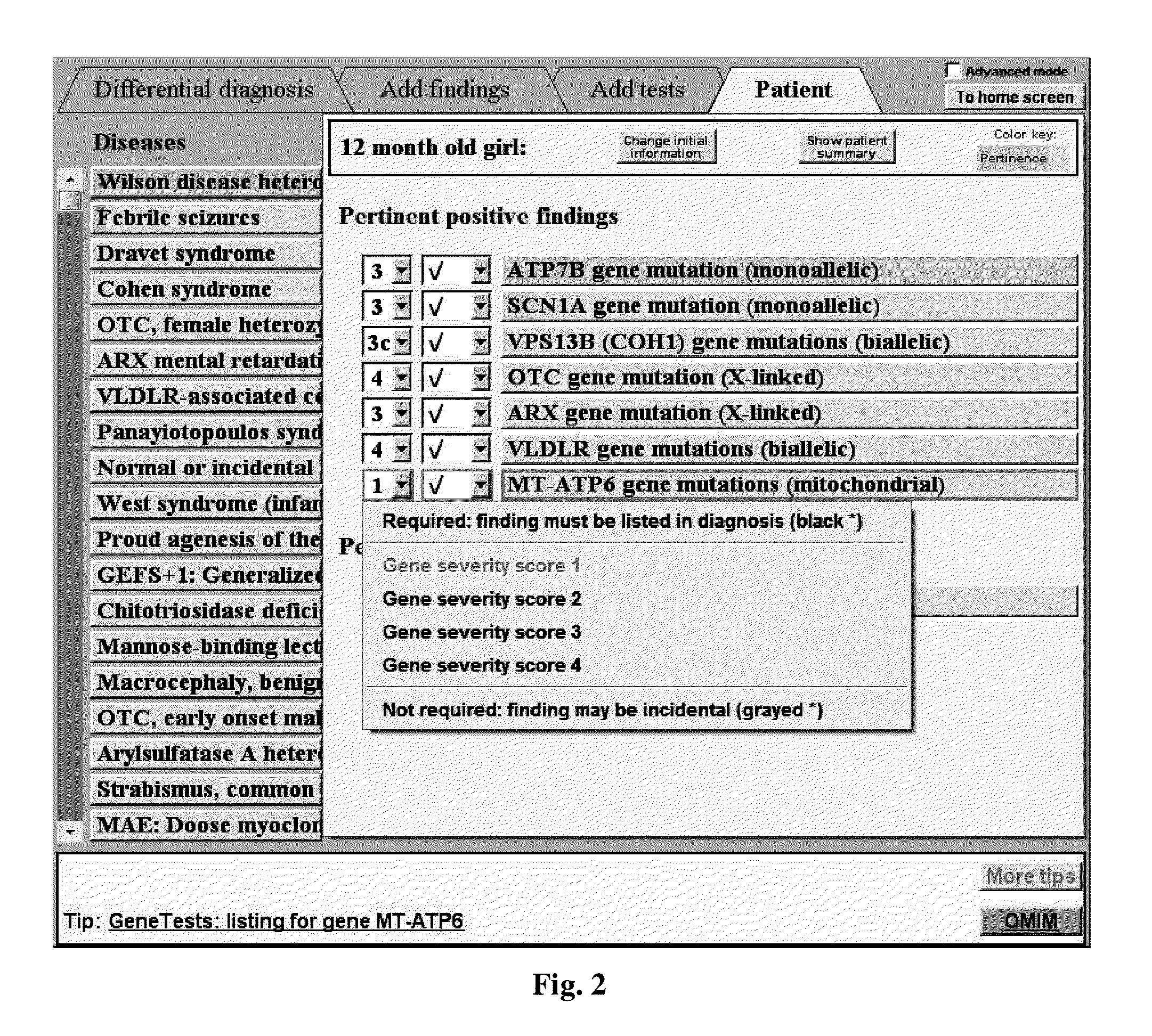Genome-phenome analyzer and methods of using same
- Summary
- Abstract
- Description
- Claims
- Application Information
AI Technical Summary
Benefits of technology
Problems solved by technology
Method used
Image
Examples
example 1
Computing with Severity Scores
[0169]The methods, devices, and systems described herein may use severity scores to override the default probability assigned to the finding of an abnormal gene test. In one implementation, a high severity score of 4 is taken as probability of, e.g., 0.000001 of such a gene abnormality in “normals” (e.g., the general non-diseased population), while an intermediate severity score of 2 is taken as a probability of, e.g., 0.0001. As a result, the diagnostic software treats a variant with high severity score as being like a rare clinical or lab finding, which can influence the diagnosis dramatically, while it treats a variant with an intermediate severity score as being like a more common clinical or lab finding, which influences the diagnosis less. Severity scores may be, e.g., integers, e.g., 0-4 inclusive, or, in some embodiments, may be non-integer values.
[0170]The importing of the variant table of FIG. 1 into the software, keeping the most severe varia...
example 2
Computing with Severity Scores that are Calculated as a Quantitative Result by Weighing Several Inputs
[0173]In some embodiments, e.g., as described in Example 1, severity scores are imported as pre-calculated numbers. In alternative embodiments, severity scores are calculated as quantitative results by weighing one or more inputs from sequencing and bioinformatics analysis, for example the number of “reads” of a particular variant and the pathogenicity as assessed from modeling an amino acid substitution or truncation and using various widely available functional and conservation scores. By using a quantitative measure instead of using boolean “cut-offs” or “filters,” the analysis may, in some instances, cast a wider net and consider variants that would be excluded by other approaches, and use the comparison to phenome information to highlight variants that may have been filtered out inappropriately by boolean filtering used in previous approaches, but then are elevated by their mat...
example 3
Computing with Zygosity
[0175]The methods, devices, and systems described herein include labeling each gene finding in the diagnostic software with known information about its zygosity, i.e. whether the genetic abnormality needed to produce disease is:
[0176]a) Autosomal monoallelic: a gene abnormality on only one of the two copies of a chromosome is needed to produce a disease termed an autosomal dominant disease;
[0177]b) Autosomal biallelic: a gene abnormality on both copies of a chromosome is needed to produce a disease termed an autosomal recessive disease;
[0178]c) X-linked: a gene abnormality is on the X-chromosome, of which males have only one copy, and are thus differently susceptible to such X-linked diseases;
[0179]d) Y-linked: a gene abnormality is on the Y-chromosome, of which only males have a copy, and only males can be affected by such Y-linked diseases; or
[0180]e) Mitochondrial: a gene abnormality is on the mitochondrial DNA, of which males and females have only one copy...
PUM
 Login to View More
Login to View More Abstract
Description
Claims
Application Information
 Login to View More
Login to View More - R&D
- Intellectual Property
- Life Sciences
- Materials
- Tech Scout
- Unparalleled Data Quality
- Higher Quality Content
- 60% Fewer Hallucinations
Browse by: Latest US Patents, China's latest patents, Technical Efficacy Thesaurus, Application Domain, Technology Topic, Popular Technical Reports.
© 2025 PatSnap. All rights reserved.Legal|Privacy policy|Modern Slavery Act Transparency Statement|Sitemap|About US| Contact US: help@patsnap.com



